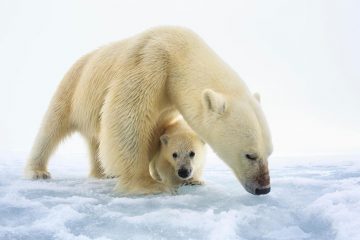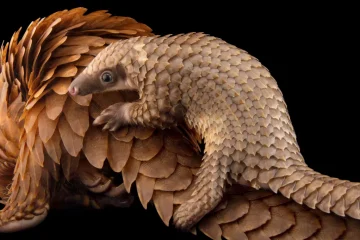What do you know about these giant creatures?

During our lifetime, if we try to recall our memory about whales, the picture that comes to mind is a big blue fish that lives in the sea. The whale is an aquatic mammal that belongs to the order Cetacea. Whales are the heaviest known animals living, or fossils, and blue whales are the largest. Killer whales can be considered the largest apex predators in the marine environment, as they do not have any natural predators. These mammals represent some distinct features that can be seen only in mammals. They breathe air, they are warm-blooded, they give live birth, and they provide the younger with milk. Some of the special adaptations can be observed as flippers and tail flukes. Almost all whales have an explosive breath called the blow. These blows are visible because the water vapor in whales’ hot breath condenses when the blow is released. The whales need to control their body heat as the hair is restricted only to some special areas, so for that they have thermoregulation mechanisms. In whales, there is a restricted mechanism of vision underwater, and sometimes they use sound to communicate underwater for large distances. Toothed whales can produce sounds and interpret their reflections through echolocation. As the whales show internal fertilization, female animals are pregnant for about a year, and the young are relatively large when compared with other animals. Mainly, there are two suborders of whales known as baleen whales and toothed whales, and they differ according to their feeding mechanisms. Baleen whales have baleen plates or sheets that sieve prey from seawater. Tooth whales have teeth, and they normally feed on crustaceans, small shrimp, and other small fish. Another significant difference among them is that baleen whales have 2 blowholes, while toothed whales consist of one. There are 15 baleen whale species and 77 toothed whale species in the world. Normally, whales are threatened due to human activities, as they are hunted for food resources and whale oil. During the beginning of the 20th century, demand increased, and due to technological advancement, there were facilities for frozen whale meat in the sea, which has led this species to the level of endangered.

Types of Whales
Mainly, there are two types of whales in the world: the toothed whale and the baleen whale. Baleen whales are huge creatures that can be seen in the oceans. Due to their size, they are nicknamed great whales. These species are filter feeders, and they feed on shoals of small fish or clouds of zooplankton, as well as the krill in the sea. The ballen plates of these whales are created from a material similar to human fingernails. Huge volumes of seawater are strained through these plates, which sieve the seawater and retain a huge number of sea creatures. Ballen whales consist of four families: rorqual, right, grey, and pygmy right. Most baleen whales are migratory, and it’s because it is not suitable for newborn whales to survive in cold seas, although they have much whale food present in cold seas. They do not echolocate, but they use sounds to communicate and to find mates. Also, these baleen whales do not live normally in groups, and often they can be seen alone.

Toothed whales are normally predators, and they use echolocation to identify each other and make their hunting process easier. Normally, these types of whales live in groups, and they can be considered intelligent species. They have large brains and can teach and learn from others. Most of the whales, dolphins, and porpoises are toothed whales. There are 77 species of toothed whales all together in the world.

In Sri Lanka, whale watching is an important activity that is connected with tourism. Mirissa is the most ideal location in Sri Lanka for whale watching, and mainly five types of whales have been recorded around the seas of Sri Lanka. The blue whale is the largest type that can be seen, and it has a bluish-gray colour with a “sulphur bottom” Also, it is one of the species listed as a threatened species on the IUCN Red List. The next type is the Bryde’s whale, which was named in honor of Johan Bryde. It has around 40 to 70 throat pleats that allow it to open its mouth widely during feeding, along with the three parrel ridges on the mouth. The sperm whale is the third most prominent whale type in Sri Lanka, and it is easily noticed because of its gigantic skull and prominently rounded forehead. The sperm whale has the largest brain of any known living mammal. Early scientists thought the substance in its head, known as “spermaceti,” was sperm, but it is still unclear. The humpback whale is also another type that can be witnessed during whale watching in Sri Lanka. Humpback whales are very rare to see in Sri Lankan seas, but there have been reports of seeing these whales around the seas of Sri Lanka. The humpback whale has long pectoral fins, a knobbly head, and a dark gray body with patches of white.
Importance of Whales
Although whales are one kind of species that normally live in water, they play a huge role in maintaining this ecosystem and contribute to climate regulation. Whales feed on plankton, krill, small fish, and crustaceans. Krill are very important in the food chain, as fish, whales, seals, penguins, and many other species eat these small crustaceans. Mainly, the process called the Krill paradox can be regulated by whales. It means that when there is a high presence of whales, the krill population will also increase as the whale fecal matter facilitates the growth of krill and other crustaceans. Studies have also shown that phytoplankton populations are correlated with whales’ presence. Furthermore, the carcasses of whales provide a deep-sea habitat for more than 100 species. Also, whales are important for nutrient cycling, as the physical movement of these large animals helps the distribution of nutrients and oxygen in the water.

When considering the contribution of whales to the reduction of carbon footprints, studies have found that whales can absorb huge amounts of carbon dioxide. It is estimated that a single cetacean accumulates in its body around 33 tons of CO2 each year, far more than the 21 kilos of a single tree. The average lifespan of a whale is very long and can easily reach 90 years; it becomes clear how important these massive marine animals are for maintaining the right CO2 balance in the Earth’s atmosphere. Furthermore, when whales die, the “whales fall,” which leads to organic carbon accumulation at the bottom of the sea. The presence of whales will increase the amount of phytoplankton in marine ecosystems.
Phytoplankton are massively important in maintaining the atmospheric oxygen level, as they provide 50% of the oxygen to the air and absorb about 40% of the carbon dioxide from the atmosphere, maintaining the effect of greenhouse gases and contributing to reducing global warming.
Threats to whales and measures to protect them.
Whales have been listed on the IUCN Red List as an endangered species, and it’s mainly due to the human impact on the lives of the whales. Among the threats, entanglement, vessel-whale contacts, acoustic disturbance, habitat degradation, marine debris, and environmental changes are common. Mainly, entanglement may result in starvation or drowning due to restricted movement, physical trauma, and systemic infections. An entangled animal may also be more susceptible to other threats, like vessel collisions. Humpback whales are susceptible to vessel strikes. These collisions may result in serious injury and death to both humans and whales, and they may be the second-most important threat to the whale population. Whales mainly rely on sound for communication, navigation, and feeding. Acoustic disturbances due to dredging, blasting, vessel traffic, active acoustics, and other activities may affect whales and their behavior. Another factor is habitat degradation, as habitats are more crucial for whales and other marine species for their breeding and reproduction. Environmental changes can be the final factor, and when the temperature and currents change in the water, it may affect the growth of phytoplankton and other small species, and it may affect the growth and health of the great species, such as whales, as they depend on these species for food.

As university students and the community, we have a great responsibility to protect these giant creatures from the beginning, using our knowledge and efforts. As a main step, we can reduce our carbon footprint and actively lower energy consumption. Reducing the use of plastic and other non-degradable products, as this non-degradable waste will be dumped in the sea and may affect the marine ecosystem directly. Contributing to different nonprofit organizations that are responsible for the protection of the marine ecosystem can also be a small effort that creates a great deal of change among communities. As individuals, if these measures can be taken, there will be a great change in a whole community, in a country, and in the whole world.
Written by:
Naduni Ratnayake
2nd Year Undergraduate,
Biological Science Stream,
Faculty of Science,
University of Colombo.
References:
- 12 Interesting Facts about whales | Capt. Dave’s whale watching. (n.d.). Capt. Dave’s Dolphin & Whale Watching Safari. https://www.dolphinsafari.com/12-interesting-facts-about-whales/
- Morgan, & Morgan. (2021, March 16). Reasons why whales are. . . Harbor Breeze Cruises. https://2seewhales.com/blog/reasons-why-whales-are-important/
- The Editors of Encyclopaedia Britannica. (2024, February 15). Whale | Definition, Types, & Facts. Encyclopedia Britannica. https://www.britannica.com/animal/whale
- Threats to whales | Hawaiian Islands Humpback Whale National Marine Sanctuary. (n.d.). https://hawaiihumpbackwhale.noaa.gov/protect/threats.html
- Types of Whales around Sri Lanka | Best of Ceylon. (n.d.). https://www.bestofceylon.com/sri-lanka-holiday-travel-advisor/types-of-whales-around-sri-lanka.php
- Whale and Dolphin Conservation. (2024, February 6). Whales – meet the different species – Whale and Dolphin Conservation. Whale & Dolphin Conservation UK. https://uk.whales.org/whales-dolphins/whales/
Image Courtesy:
- Title Image: https://biturl.top/I3yIv2
- 1st Content Image: https://biturl.top/zei2aq
- 2nd Content Image: https://biturl.top/amIzum
- 3rd Content Image: https://biturl.top/2aM7Br
- 4th Content Image: https://biturl.top/3iEJbq
- 5th Content Image: https://biturl.top/yEzuIb



0 Comments